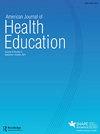瑜伽戒烟试验中招募和保留广告的效果
IF 0.7
Q4 PUBLIC, ENVIRONMENTAL & OCCUPATIONAL HEALTH
引用次数: 0
摘要
背景:很少有戒烟研究检查了他们的招募方法,以确定最有效的招募和保留方法。目的:采用一项瑜伽戒烟的随机对照试验的数据来评估招募方法(如无线电、转诊)及其与入组、参与者特征和治疗结束时保留率(EOT)的关系。方法采用方差分析和卡方检验,对1065名成人的入选方法、入选资格、随机分组和EOT保留情况进行分析。计算每个登记参与者的费用。结果通过随机分组筛选的参与者累积率因招募方法不同而不同(p < 0.05),尽管随机分组后的保留率没有差异。在随机的参与者中,大多数是通过广播(44%)招募的,最少的是通过报纸(5%)招募的。在不同的招募方法中,随机参与者(n = 227, 55.5%为女性)的基线心理社会(即尼古丁依赖、戒烟意愿)和人口统计学(即年龄、就业)特征存在差异。注意到不同招聘方法的成本差异(p < 0.001)。招聘方法在成本和吸引最终报名的人的能力上有很大的不同。这项调查强调了需要结合不同的招募方法来吸引不同的个体参与戒烟治疗。本文通过SHAPE美国在线研究所(SAOI) http://portal.shapeamerica.org/trn-Webinars提供了一个AJHE自学测验本文章由计算机程序翻译,如有差异,请以英文原文为准。
Advertising Effectiveness for Recruitment and Retention in a Trial of Yoga for Smoking Cessation
ABSTRACT Background Few cessation studies have examined their recruitment methods to determine the most effective methods for enrollment and retention. Purpose Data from a randomized controlled trial of yoga for smoking cessation was used to evaluate recruitment methods (e.g., radio, referral) and their relationship to enrollment, participant characteristics, and retention at end of treatment (EOT). Methods Screening data from 1065 adults were analyzed for recruitment method, eligibility, randomization, and retention through EOT using Analysis of Variance and Chi-squared tests. Costs per enrolled participant were calculated. Results Rates of participant accrual from screening through randomization differed by recruitment method (p < .05), although there were no differences in retention post-randomization. Among randomized participants, the majority were recruited via radio (44%) and the least number via newspaper (5%). There were differences in baseline psychosocial (i.e., nicotine dependence, readiness to quit) and demographic (i.e., age, employment) characteristics of randomized participants (n = 227, 55.5% women) across recruitment methods. Differences in costs between recruitment methods (p < .001) were noted. Discussion Recruitment methods differed substantially in their cost and ability to attract individuals who would ultimately enroll. Translation to Health Education Practice: This investigation highlights the need to combine different recruitment methods to attract diverse individuals into cessation treatments. A AJHE Self-Study quiz is online for this article via the SHAPE America Online Institute (SAOI) http://portal.shapeamerica.org/trn-Webinars
求助全文
通过发布文献求助,成功后即可免费获取论文全文。
去求助
来源期刊

American Journal of Health Education
PUBLIC, ENVIRONMENTAL & OCCUPATIONAL HEALTH-
CiteScore
1.70
自引率
10.00%
发文量
36
期刊介绍:
AJHE is sponsored by the American Association for Health Education of the American Alliance for Health, Physical Education, Recreation and Dance. The mission of the American Association for Health Education(AAHE) is to advance the profession by serving health educators and others who strive to promote the health of all people through education and other systematic strategies.AAHE addresses the following priorities •Develop and promulgate standards, resources and services regarding health education to professionals and non-professionals •Foster the development of national research priorities in health education and promotion. Provide mechanisms for the translation and interaction between theory, research and practice.
 求助内容:
求助内容: 应助结果提醒方式:
应助结果提醒方式:


